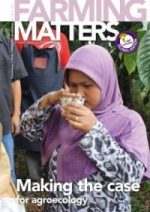Farmers from around the world explain how they assess the impacts of agroecology.
“Agroecology produces food for all life forms”
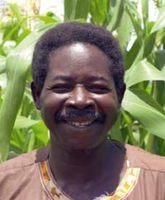
Ablacé Campaoré, peasant and activist in Burkina Faso
“I was born a peasant. I grew up in the countryside and I have never stopped farming. Now I am also part of a peasant organisation.
When you look at the way agroecology is lived in Burkina you can easily see the extent of its impact. There is life in the soil, you feel how plants cohabitate with microorganisms, and you see the work of man.
On an agroecological farm, you may notice that vegetables are sometimes slightly damaged by bugs. These crops are not completely destroyed or wasted, they are still eaten. Insects do not carry their own tools to grow their own food. This is the way life is. Agroecology produces food for and nurtures other life forms as well.
You may ask if this is really agroecology? In agroecology you can feed livestock from your crops, or you plant companion crops that produce smells and flavours that minimise damage by insects. That is a real cohabitation, working together and not against nature.”
Interview: Georges Félix and Diana Quiroz
“Farmers and agronomists increasingly support agroecology”
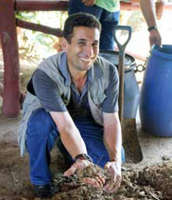
Saad Younis Dagher, farmer and extensionist in Palestine
“I am a farmer, an agronomist, and I also volunteer for the Arab Agronomists Association, providing technical support to farmers transitioning to agroecology.
I know that I have arrived at an agroecological farm when I look at the diversity of plants. If there is diversity of vegetables and fruit trees and these are mixed together I know they practice agroecology. I also look at the soil. If the soil is rich in organic matter and if I see compost I recognise that I am in an agroecological farm. Also, I look at the weeds. If the weeds are dead, and the crops alive, it means that herbicides are being used. The same goes for insects. If I find dead insects, then it is likely that the farmer uses pesticides and insecticides.
I think we can first measure the impact of agroecology by looking at the increasing number of farmers and agronomists who practice and support agroecology. A second indicator of impact is the reduced use of chemicals by farmers and also the increased use of local seeds. These are some of the indicators by which we can measure the impact of agroecology.”
Interview: Georges Félix
“Agroecology promotes integration”
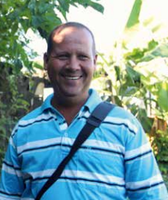
Abel Morales, farmer and agroecological coordinator in Cuba
“I am a farmer and I also coordinate the agroecological movement of the National Association of Small Farmers (ANAP) in a municipality of Camagüey, a province of Central Cuba.
In order to measure its impact, we first need to take into account the objectives of agroecology. These are: to obtain healthy products through clean processes and in harmony with the environment and all the elements of our natural surroundings. Taking these fundamental objectives into account, I would say the impact of agroecology is very positive.
Socially, agroecology promotes integration through family and community farming. In terms of production, sustainability is achieved through high biodiversity and holistic farming. The economic impact of agroecology is also great because farmers don͛t need to invest in external inputs or off-farm technologies. Where there are good agroecological practices, you see a productive system that is organic and fully functional. It is a system where all the factors of a farm are interpolated.
A close look at plant-soil-animal interactions in an agroecological farm shows how these are fully integrated. Plants speak for themselves when agroecology is practiced. If you visit an agroecological maize field, you notice the many and different insects. These are biological control agents, you know!”
Interview: Georges Félix and Diana Quiroz
“Agroecology has changed our lives for the better”
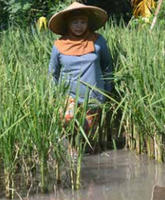
Bu Siyami, rice farmer in Indonesia
“As a farmers’ daughter, I have always been engaged in farming activities. In 2004 I got married and moved to another city.
There, my husband and I bought a pair of buffaloes and 0.1 ha of paddy field. In 2007 we joined a Farmer Field School organised by a local NGO to train farmers in organic rice production and the System of Rice Intensification.
After switching to organic, our quality of life improved. We increased the size of our paddy field and now own 0.25 ha and rent another 0.25 ha. We could also fix our house and buy more buffaloes. We now have five of them and sell at least one every year.
I no longer need to buy pesticides or chemical fertilizers because we grow insect repelling plants and use buffalo manure on the fields. Many beneficial animals that protect our crops from pests live in our fields and our farm is less prone to infestations from pests. Our soil is also more fertile than our neighbours’.
Agroecology has changed our lives for the better. We do not depend on external inputs anymore. We do not produce waste either because we do not burn rice straw; instead we feed it to our buffaloes and their manure is recycled as biogas and natural fertilizer.”
Interview: Uma Khumairoh and Georges Félix
“Our dinner table conversations revolve around farming”
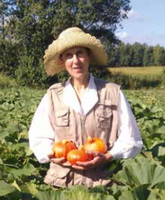
Anya van der Hoff, farmer in France
“We live for organic farming. Our grandparents and parents were peasants and our son is already contemplating his future as an agroecological farmer. The ultimate indicator of success is whether we can sustain our farm and way of life for generations to come. Thus the dinner table conversations in our family revolve around farming, particularly how to improve the way we manage our farm. Another important way of seeing how well we are farming also relates to the dinner table. The food that an agroecological farming family eats is very telling. We grow what we like to eat and our food is fresh, diverse and seasonal.
When I visit other peoples’farms I listen to the way they talk about farming. And I immediately search for diversity. Which varieties of crops are being used? How many? What other plants and ‘weeds’ are present? Are there natural areas or hedges providing habitats for birds, insects and other animals?”
Interview: Georges Félix
“Eating well, healthy and locally”
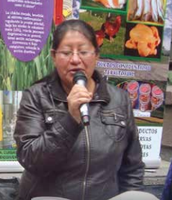
Sandra Pagalo, peasant and technical staff for the indigenous women’s organisation Kamachw, Chimborazo, Ecuador
“Today we witness that people are no longer taking care of the Earth’s natural resources. We use too many chemicals, farmers face major debts, we lose our seeds and our food sovereignty, we are sick and malnourished, and people are leaving rural areas.
In response, many of us are creating change. As peasants, we work with nature instead of with chemicals. Consumers also want to eat well – they tell us this when we meet them in our agroecological markets. We are also trying to add value to our products. This allows us to make a little more money, and at the same time create new and healthy products that are attractive to consumers. It is also a way to promote and rescue our traditional crops such as Andean maize varieties. Contrary to so called improved maize, our traditional maize has survived in the Andean mountains for thousands of years.
Agroecology leads to food sovereignty, stronger farmer organisations, a vibrant local economy and protection of the environment. It is synonymous with a life ‘in full’, in which humans and nature interact, agrobiodiversity is enhanced and we can live well, which is what we call Buen Vivir. With agroecology, we see that we have better health and nutrition and also better prices for our products. So agroecology is environmentally, socially and economically viable. In the end, what is life worth- the life of Mother Earth, the producer, the consumer?”
Adapted transcript by Janneke Bruil from a presentation at the ‘Agroecological Journeys’ at the Polytechnical School of Chimborazo in Riobamba, Ecuador (July 2016).
“Converting to agroecology has brought me many benefits”
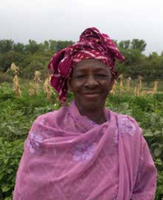
Madame Togolá, peasant in Mali
“I am a peasant and a member of a rural women’s convergence in Mali. I own a piece of land that allows me to produce for my family and to sell at the market. I didn’t use to own any land, but the peasant organisation that trained me in agroecology first made sure I had some land to work on. With their support, other women and I have obtained collective land rights.
I’ve noticed that applying chemical fertilizers on plants has only a limited effect. But when I use organic compost to fertilize my crops, plants keep on taking up nutrients and I don’t need to reapply as often. Besides saving me work, using this compost is almost a guarantee for higher yields. When you start using chemical fertilizers you will need to keep increasing the amount if you want to sustain the yield. That is unsustainable.
Converting to agroecology has brought me many benefits. Not only do I produce more, but I also have rights. I know my land and my crops so well and everyone in town wants to buy my produce. This is because they know my vegetables are healthy, and so in this way they also benefit from agroecology.”
Interview: Diana Quiroz

